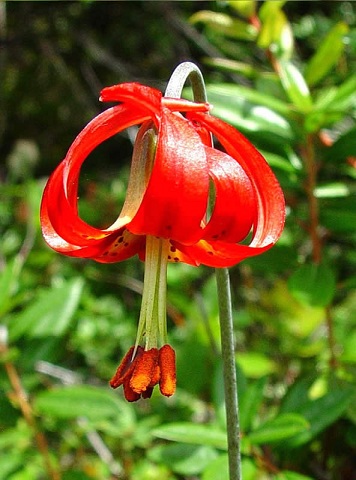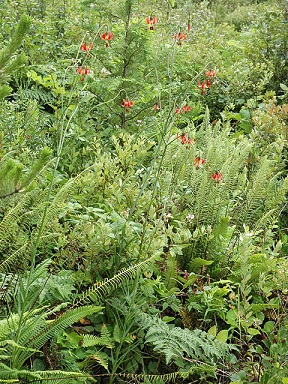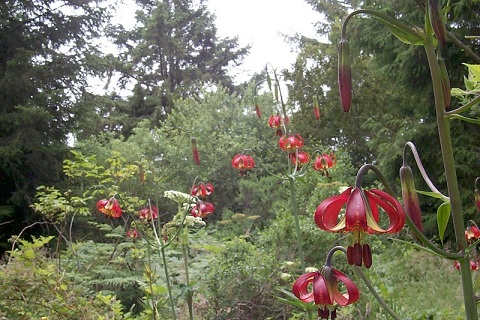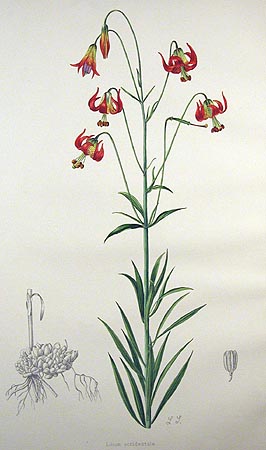|
|
|
Hansen's Northwest Native Plant Database |
|
|
|
Lilium occidentale (Western Lily)
Photo credit: Jennie Sperling |
 |
||||||||||||||||||||||||||||||
|
This species is now considered rare.
Lilium occidentale, commonly called Western Lily, is native
to southern Oregon and northern California where it has been
documented in just 28 locations (down from historic
locations of 58), every one within six miles of the coast.
Found in coastal prairie habitats, swamps, stagnant bogs, on
bluffs or sandy cliffs and in seaside spruce forested areas.
|
|||||||||||||||||||||||||||||||
|
This is a perennial herb very often 6 ft or more in
height. The bulb is about 4 inches long, scaly and reported to be
edible. The leaves circle the stem at intervals. The flower stems sprout
from the end of the main stem and bear up to 35 flowers, nodding in
breezes. The flowers have 6 petals curved back towards the stem. They
are very red with spots in the center, usually bicolored and more
greenish outside but red inside. They have the usual spots in various
colors. The flowers are pollinated by hummingbirds, usually Allen's (Selasphorus
sasin). Careful research and monitoring can positively name its endangered status in both Oregon and California as well as federally are resultant from environmental factors. Threats to this species have included grazing and trampling by livestock, development and ranching, cranberry farming, genetic drift, vehicles and road maintenance, and horticultural collecting of the bulbs and flowers. New sprouts and shoots dry out quickly and are easily crushed. The invasion of trees into the plant's habitat, either by natural succession or deliberate planting and fire suppression, can alter the hydrology and soil structure enough to eliminate it. When the plant was listed as an endangered species in 1994, there were 2000 to 3000 individuals remaining. Photo credit: Melissa Carr |
 |
||||||||||||||||||||||||||||||
|
One tragic instance of habitat destruction illustrates the change in public opinion and government policy over the last 30 years. In the 1960s, a public restroom was built directly over a known population at Shore Acres State Park. The population was completely destroyed. Conservation and habitat protection for native plants are now priorities both for local residents and the government. Too late, however, to save this stand of precious natives from destruction. The USDA PLANTS database under Wetland Indicator Status has this announcement: NOTE: On June 1, 2012, the 2012 National Wetland Plant List superseded the information below (see Federal Register, May 9, 2012, 77(90): 27210-27214[https://federalregister.gov/a/2012-11176]). For updated wetland information about this species, see the latest wetland list. Photo credit: Dave Imper |
 |
||||||||||||||||||||||||||||||
| For a short comparison of northwest native lilies, click here. | |||||||||||||||||||||||||||||||
|
Thanks to the following resources:
|
 |
||||||||||||||||||||||||||||||
|